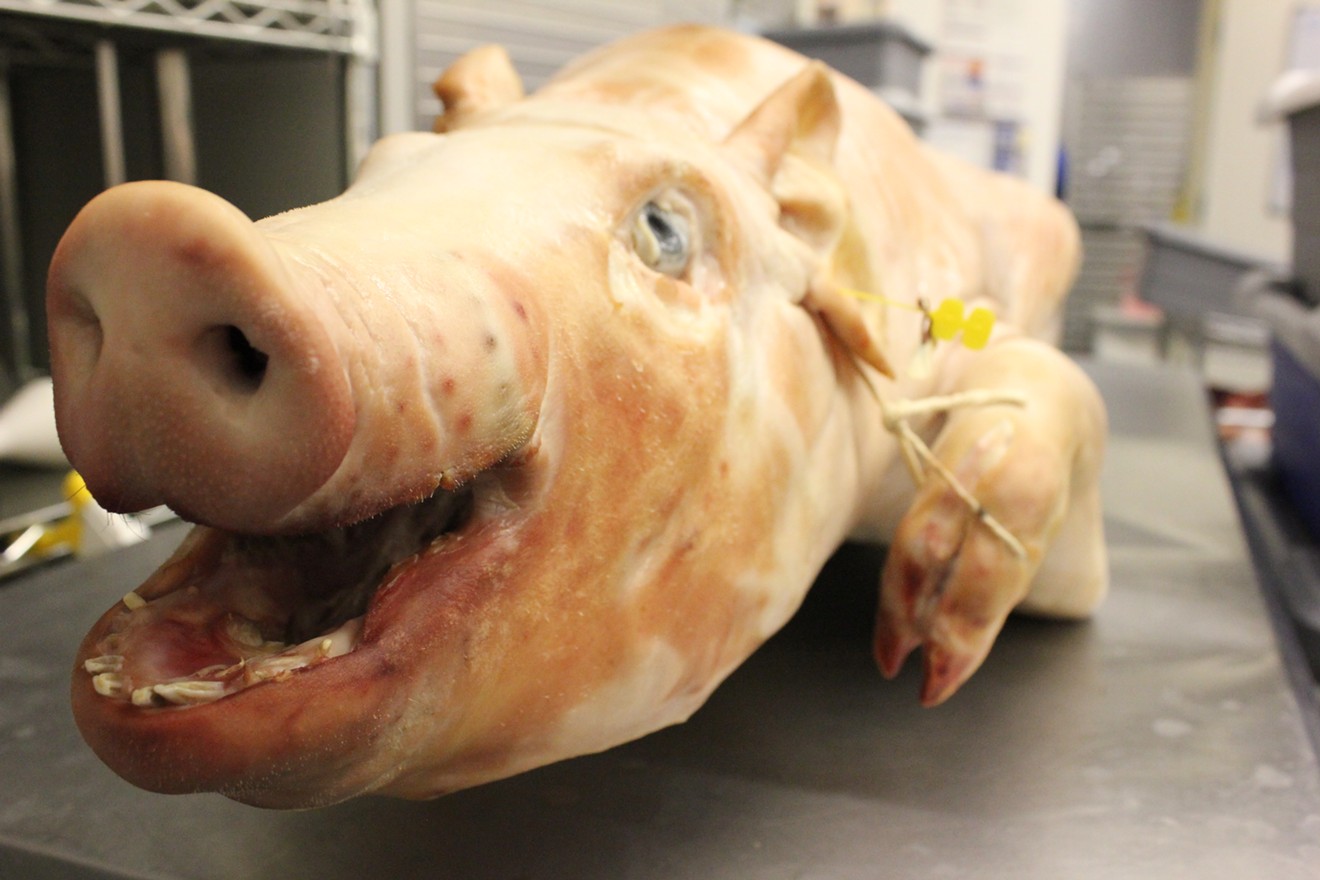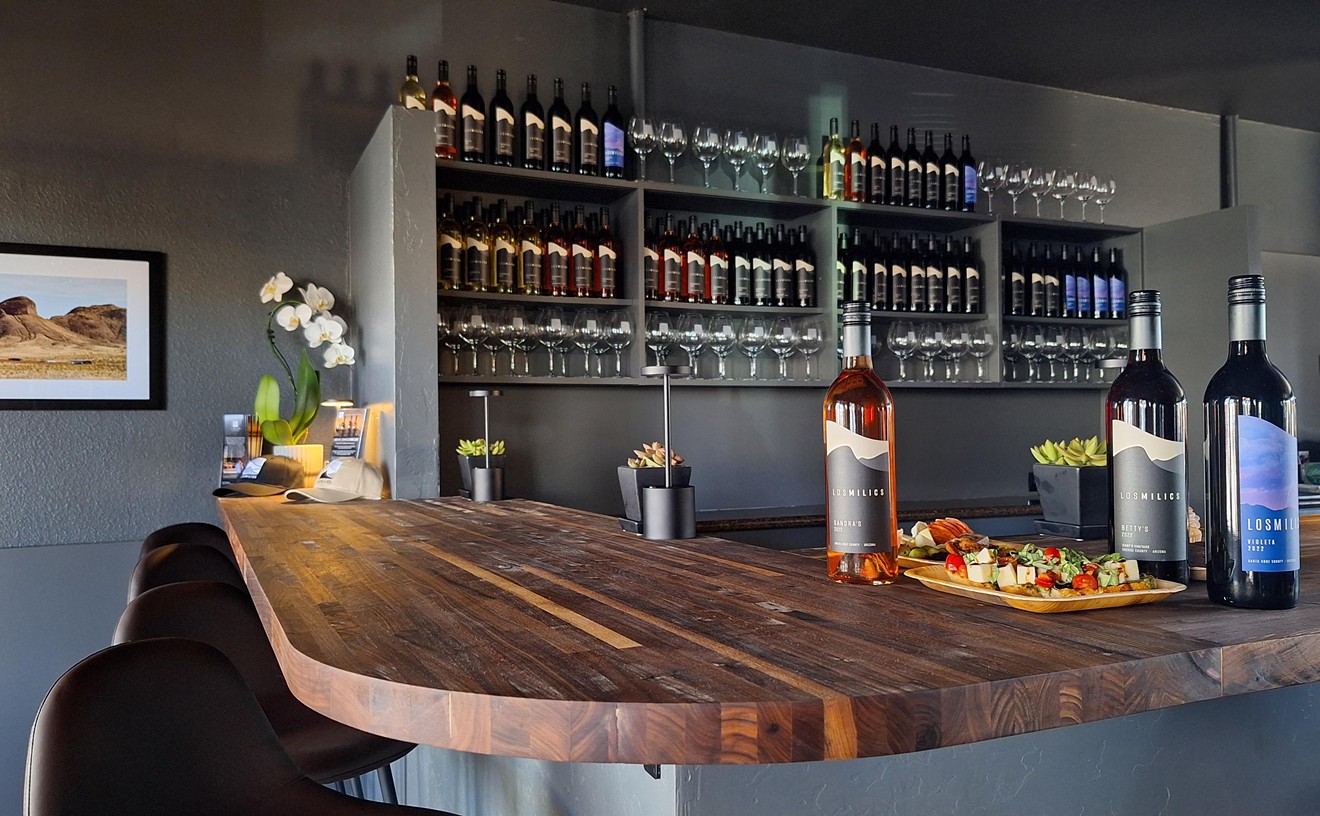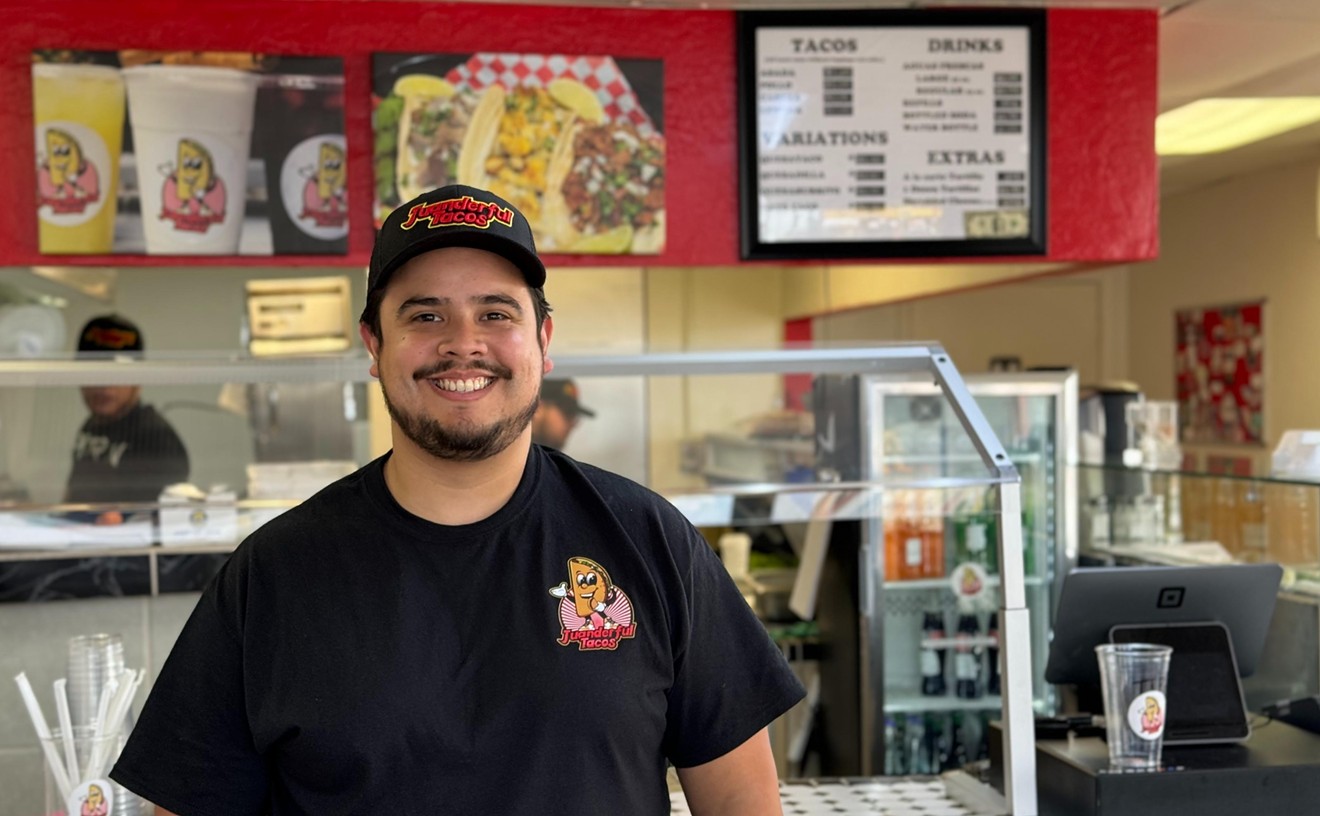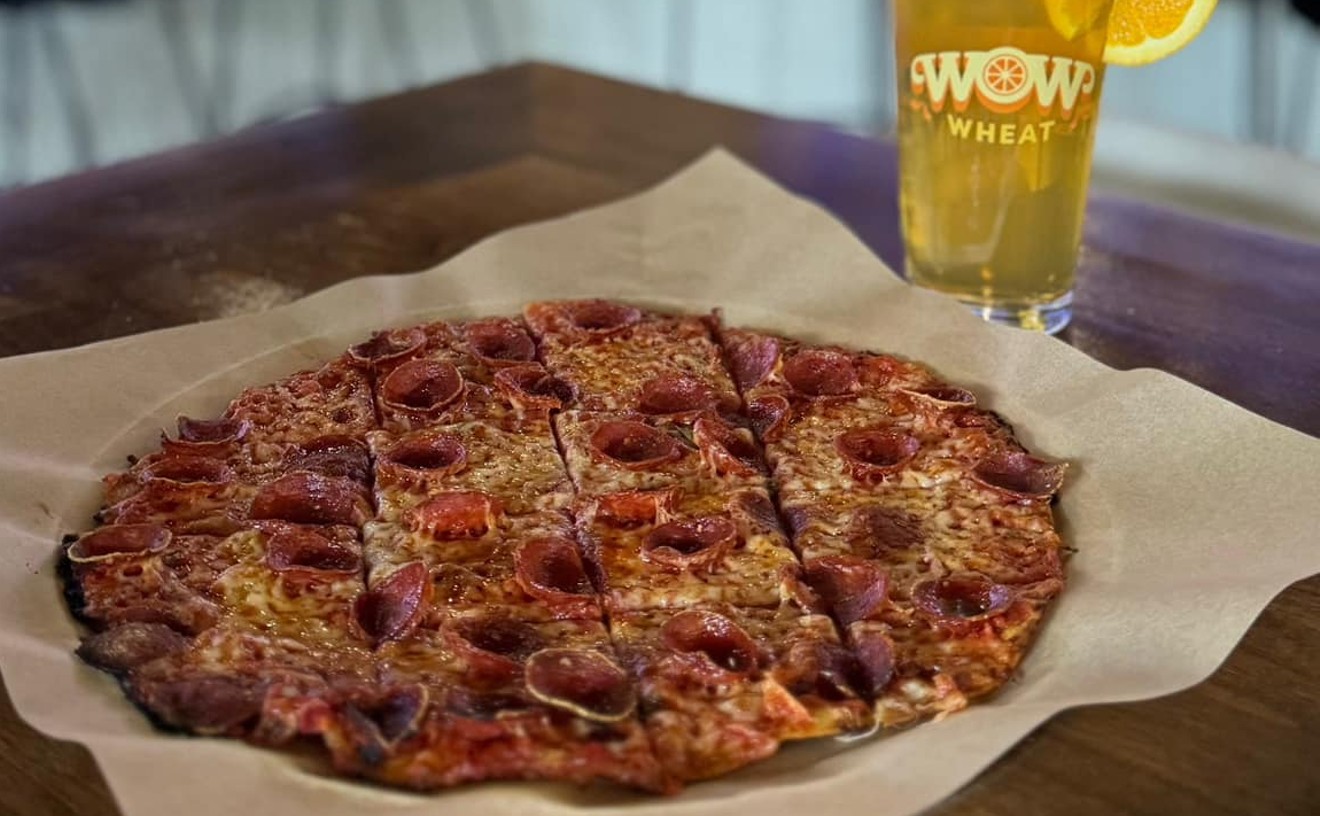Though buried on Buckeye Road and so nondescript its storefront looks abandoned, The Meat Shop is one of Phoenix’s finest butchers. And it is indeed open.
In a back room, the floors are speckled with ruby flesh. Cattle quarters tower on tables, hacksaws rock, sinews separate, and Flinstonian cuts slide free as butchers work on beef brisket, tri-tip, oxtail, pork cheek, trotter, head; pheasant and rabbit, ground chuck and buffalo hotdogs; house-smoked and -stuffed sausages; beef knuckle and marrow; porchetta and pork porterhouse.
Just about anything you could want — standard or strange — The Meat Shop can provide if given sufficient notice.
“We’re an old-school butcher,” says David Grant, head butcher. “If you had a cut in Argentina that you can’t find anywhere — whatever you need, we can do.”
Though chops, ribs, and familiar cuts fill the display case, there is a certain mystique to a meat artist who, for a customer, will conjure pig feet or brains.
“Welcome Chicken + Donuts just took 40 pounds of trotters for their ramen,” Grant says, and that's just one of the many local eateries that special-order offbeat pig parts. “They make a broth out of our bones, hocks, and feet.”
The Meat Shop’s brand of porcine sorcery begins way beyond the shop. The brand owns a farm in Palo Verde where, at any one time, 400 to 500 pigs live. These pigs subsist on corn, soy, dry fruit, and minerals. They have mister "showers," for when they need to cool down. Pigs reproduce at a furious clip, birthing 12 to 16 piglets a litter. These piglets will reach bacon age in just six months.
Central to logistics, control, and quality, The Meat Shop also owns a slaughterhouse.
There, pigs are stunned, suspended, and killed via a cut to the throat. This method is among the least painful ways of doing the deed.
“I’m not going to say it’s humane, because killing is not humane,” Grant says.
Pigs are killed Monday, and after hanging for 16 hours, they arrive early Tuesday morning at The Meat Shop for skinning and butchering — and fully broken down by 1 p.m. the same day.
The quality of the cuts come from a variety of factors: animals raised with good diets, the ability to slaughter and deliver same day, and their quick, deft processing at the shop on Buckeye Road. These guys control the pigs from birth to baby back. There’s a reason restaurants like Tratto source heavily from The Meat Shop, and their unparalleled quality easily explains why their bacon flies off the rack.
The back-room butchers break down 10 pigs a week, closer to 16 a week during the holidays, totaling some 650 to 700 pigs a year. The animals are Duroc and Yorkshire breeds, and are anywhere from 40 to 230 pounds when they reach the shop. The Meat Shop also butchers one to two cows per week. Beef doesn’t begin on pastures The Meat Shop owns, but all their cattle are grass-fed and raised in-state.
Grant knives at a cattle quarter, carving and puncturing with smooth strokes and calculated jerks with bladework to rival any you’ll see on TV. To his left, another butcher seasons ground pork. They work quietly and hard. A sacred vibe permeates the room. Later, one butcher will cut individual sirloin chops from a length of pork. One will break down the whole pig splayed on a metal table in the corner.
Some pig heads will sizzle with vinegar and calamansi juice and become sisig; some crown roasts will dazzle the Valley’s finest tables; some guanciale will power pasta carbonara; and some cuts will sit all pink, white, and luscious in the case up front — just waiting for thoughtful Phoenix home cooks to use them as inspiration for their next culinary masterpiece.
Five Unusual Cuts at The Meat Shop (And What to Do With Them)
Pork Porterhouse
Long one of the best and most expensive cuts of steak from cattle, a porterhouse is a t-bone with a wide round of tenderloin attached opposite the bone. The Meat Shop does a pork porterhouse. To cook one of these babies, shower on salt, fire up a grill, and let the luscious natural flavor shine (in other words, don't get fancy).
Guanciale
Guanciale, cured pork cheek, packs a deep bacon-like flavor but with more fat and funk. The best way to use guanciale is to flavor pasta. Dice the cheek into half-inch cubes, sauté, and remove from the pan once nice and brown. A pool of fat will remain. This is your starter for pasta — treat it like olive oil, sizzling onions, garlic, herbs, and whatnot. Toss the pasta in the pooled fat once it's boiled. Re-add the crisp guanciale to finish the dish.
Oxtail
Oxtail is a tough cut that needs a long, slow braise. You can't really improvise as its leanness leaves little room for mistake. When messing with oxtail, I typically snag a recipe for coda alla vaccinara, a pretty foolproof oxtail dish common in Rome.
Chicken Liver
The Meat Shop's Palo Verde farm also raises chickens. Chicken livers are one of the galaxy's most underrated foods. They are cheap, pack flavor, and are easy to cook. Bread the livers and pan-fry them in cast iron, hitting them with a squeeze of lemon at the end.
Pig Tails
Deep-frying pig tails produces an insanely porky bite of meat. The skin gets nice and crisp, and soft morsels of meat await in the middle.
[
{
"name": "Air - MediumRectangle - Inline Content - Mobile Display Size",
"component": "18478561",
"insertPoint": "2",
"requiredCountToDisplay": "2"
},{
"name": "Editor Picks",
"component": "16759093",
"insertPoint": "4",
"requiredCountToDisplay": "1"
},{
"name": "Inline Links",
"component": "17980324",
"insertPoint": "8th",
"startingPoint": 8,
"requiredCountToDisplay": "7",
"maxInsertions": 25
},{
"name": "Air - MediumRectangle - Combo - Inline Content",
"component": "16759092",
"insertPoint": "8th",
"startingPoint": 8,
"requiredCountToDisplay": "7",
"maxInsertions": 25
},{
"name": "Inline Links",
"component": "17980324",
"insertPoint": "8th",
"startingPoint": 12,
"requiredCountToDisplay": "11",
"maxInsertions": 24
},{
"name": "Air - Leaderboard Tower - Combo - Inline Content",
"component": "16759094",
"insertPoint": "8th",
"startingPoint": 12,
"requiredCountToDisplay": "11",
"maxInsertions": 24
}
]












